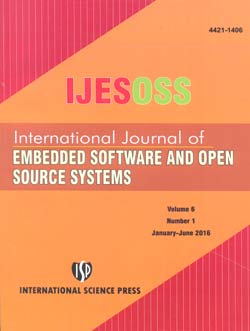
The International Journal of Embedded Software and Open Source Systems is a peer-reviewed journal. The aim of the International Journal of Embedded Software and Open Source Systems (IJESOS) is to publish high-quality original research articles on the large field of embedded software and open source systems. The mission of IJESOS is to provide a media for academics, industrial professionals, educators and policy makers working in the field, to contribute and disseminate innovative and important new works of all aspects of embedded software and open source systems with emphasis on computing systems, software models, compilers, software architectures, design tools and methodologies, development processes, testing and applications.
IJESOS covers all aspects of the embedded and open source software systems. Topics of interest include, but are not limited to:
• Embedded and open source software architecture and platform
• Characteristics of embedded and open source software implementations, projects, products and processes
• Case studies of implementing embedded and open source software projects, their participants and/or their development process
• Programming languages and software engineering for embedded and open source systems
• Embedded and open source software education methodologies
• Real-time systems: including real-time related issues such as system software, parallel and distributed real-time systems, real-time kernels, real-time OS, middleware, task scheduling, multitasking design, etc.
• Reconfigurable and reusable embedded and open source software components
• Embedded and open source software testing, and verification and validation
• Embedded software design for signal processing/communication/multimedia/computer vision systems
• Legal and licensing issues of embedded and open source software
• Embedded software and open source system modeling and analysis for consumer electronics
• Embedded and open source software and processes research methods, tools, and data repositories
• New applications: such as new challenges for next generation embedded computing systems, arising from new technologies (e.g., mobile computing techniques, wireless grid computing), new applications (e.g., pervasive or ubiquitous computing, internet and web-service tools, vehicular technologies, multimedia systems, embedded computer vision…), new principles (e.g., embedded engineering, open science and open knowledge), etc.